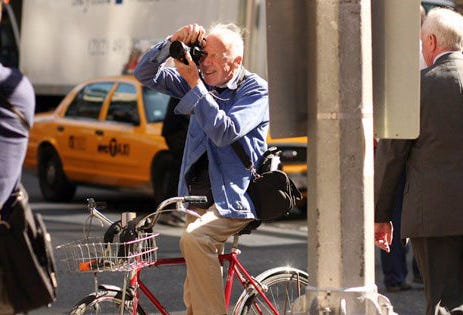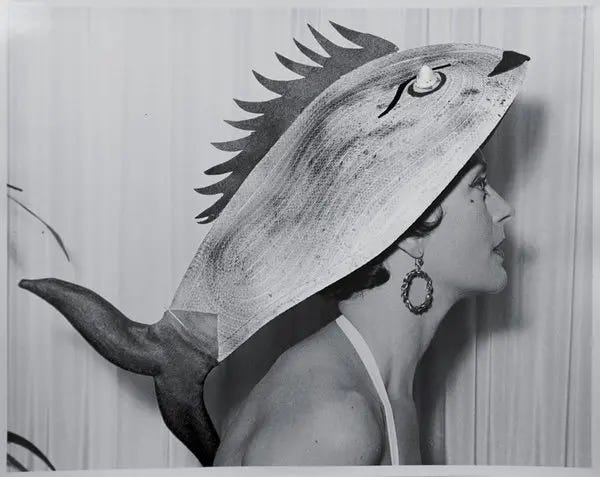The story behind the big clamshell hat.
Just like Bill Cunningham, I'm not the only one switching careers. Before becoming a photographer icon, he started crafting imaginative hats. Plus, the story of a majestic, now demolished theatre.
So, apparently, I was not the only one who wasn't aware of Bill Cunningham's past as a hatmaker.
Last week, I found a photo that surprised me, and when I posted it online, it surprised others.
It was of an elegant woman dressed in impeccable white, whose identity remains hidden by a giant clamshell. You read that right; she is wearing a massive hat shaped like a clamshell.
The caption said the responsible for the design was Bill Cunningham. My first assumption was that it meant the photo was taken by him.
But still, I was intrigued to know more about it and to have more context to add to my post on Instagram.
I started my search, and different sources claimed the design was indeed by Cunningham. I figured it could still result from a telephone game, where someone credited the source wrong, and the rest followed.
And then I found the real story behind it, and it turned out the others were right, and I was wrong.
Bill Cunningham: From Hats to Behind the Camera
Cunningham's contribution to the fashion world is primarily associated with two of his columns, On the Street and Evening Hours, published in The New York Times. He was officially appointed to write for these columns in 1989, but his work in fashion journalism for The Times began in the late 1970s and continued until he passed away at the age of 87 in 2016.
Bill Cunningham is nothing short of a legend of street photography. But his career started from a different path.
He briefly attended Harvard University before dropping out in 1948 and moving to New York City at 19 after saying that attending classes felt like a prison. He eventually began working in the advertising department of the iconic retailer, Bonwit Teller.
Just one year after moving to New York and feeling inspired by the city's most fashionable women, he saw the opportunity to blend his passion for creativity and millinery while catering to a sophisticated clientele. Thus, he launched his own line of hats under the name William J. (the "J" was for John).


The result? One that you can expect from such a legend in fashion. A combination of whimsicality, creativity and daring mixed with a touch of impracticality.
Cunningham's designs were spectacular, both in originality and execution.
Think of shells, octopuses, fishes, apples and cabbages. Do any of those make you think of hats? Well, for him, it did.
Cunningham crafted whimsical hats like an octopus, fish, and clamshell. Others were decorated with feathers and fur. Some were shaped like fruits and veggies or had potted plants growing out of them.
Coming back in 1954 from serving in the Korean War stationed in France, Cunningham didn't abandon his pursuit of hat-making. Although his creations were seen in the likes of Marilyn Monroe, Brooke Astor, and Errol Flynn, the approval of such icons could not surpass the challenge of keeping the business afloat.
By 1962, Cunningham had moved on to new adventures, ultimately, photography.
When asked about it, he said, "Everything I did was a little too exotic – you know, for normal people".
Oh, how I wish we "normal" people would be a little more exotic and a little less normal and support creativity like this.
Yes, I know; I can't think of a single past event where I could wear a hat like that without raising several questions or even concerns.
Yet, I dream of a future where I can buy my morning coffee in Rue du Faubourg Poissonnière, sporting a big clamshell hat and not one Parisian raising their look from their morning papers to think, "Oh no, they are taking Fashion Week too far this time".
I suspect this was his purpose behind spending the rest of his life running the streets of New York, camera in hand. He was looking for people who dared, those whom he could imagine would be brave, or maybe fun, enough to use his surreal designs outside.
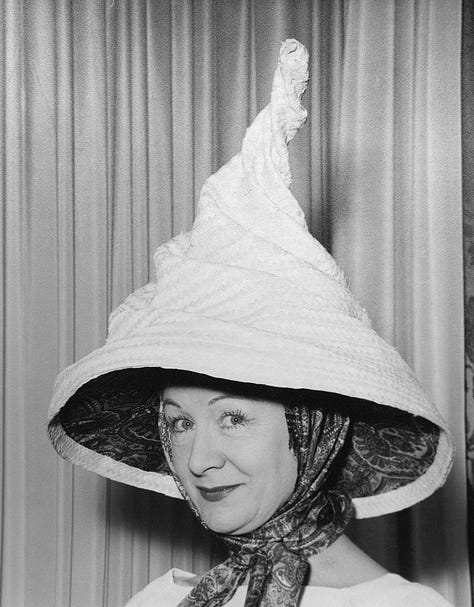


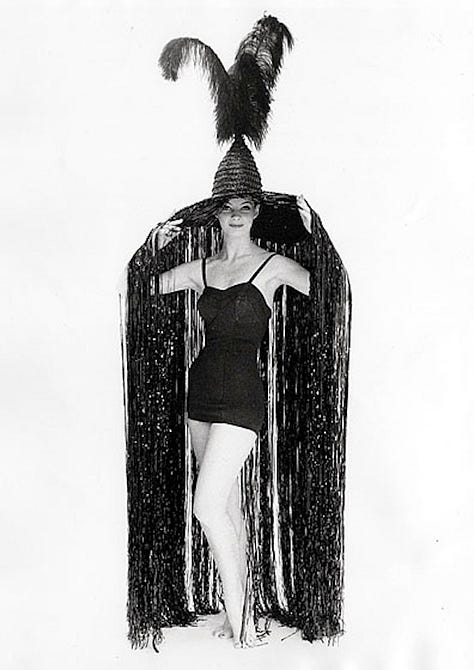
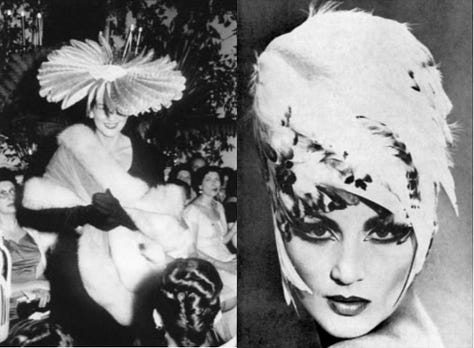
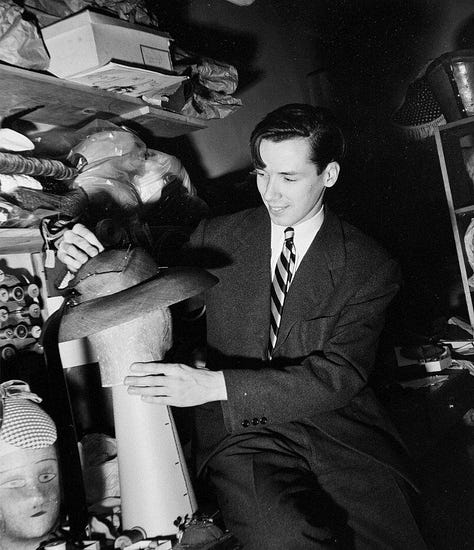
Can we please all commit to having moments like that in the future? Or if you already have them, please do invite me.
I'll be the one with the giant hat.
A space that I loved this month.
In 1919, Max Reinhardt introduced the Grosses Schauspielhaus, a theatre revamped to feature an extraordinary Expressionist design by Hans Poelzig.
The foyer welcomed visitors with fountain-like columns, leading to a cavernous amphitheatre adorned with stylised 'stalactites' illuminated by colourful lights, while the ceiling mimicked a starlit sky with countless lightbulbs.
Under Erik Charell's direction in 1924, the Grosses Schauspielhaus became known for lavish revues, emblematic of the city's decadent nightlife during the 1920s.
Seized in 1934 and renamed Theater des Volkes, the venue saw a decline in its architectural splendour, as the striking vaulted dome was either concealed or dismantled due to Nazi censorship.
Operettas and propaganda filled its halls until World War II bombings damaged the theatre in 1945.
Post-war, now in the Soviet sector, the theatre underwent another transformation, becoming the state-owned Friedrichstadt-Palast in 1947.
Revues continued until 1980 when safety concerns led to the old theatre's closure, and it was ultimately demolished in 1988 due to strong subsidence of the foundation and moulding of the supporting piles.
A new Friedrichstadt-Palast arose nearby, relegating Poelzig's masterpiece to make room for luxury apartments.
While the 'new' Friedrichstadt-Palast continues to stage opulent shows, it's the loss of the original theatre's iconic interior that remains the greatest tragedy, forever consigned to memory.
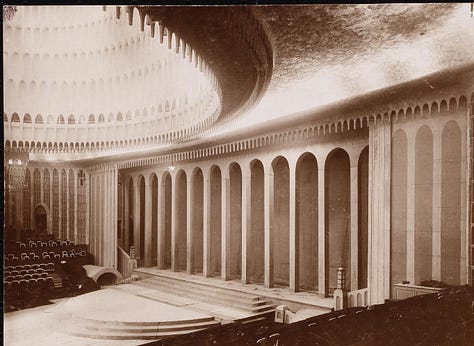
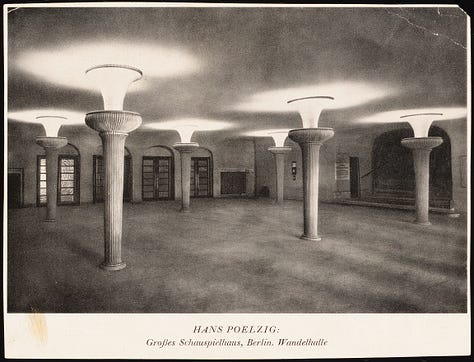
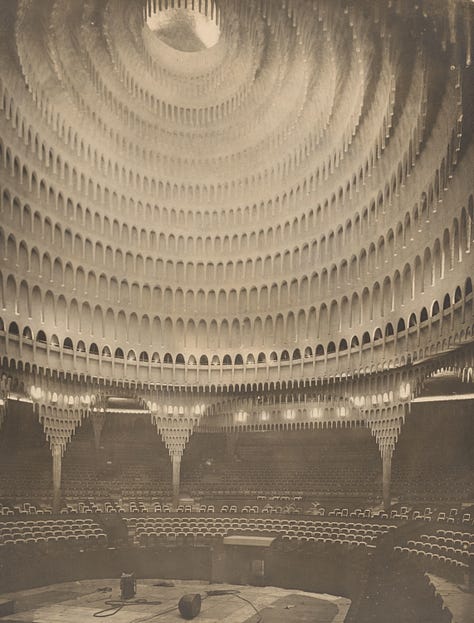
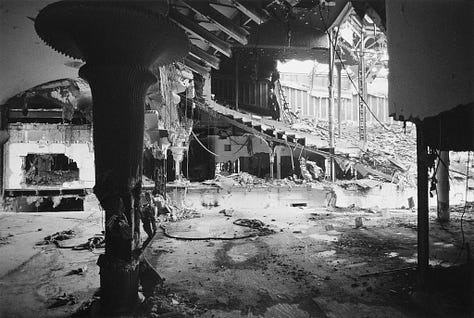
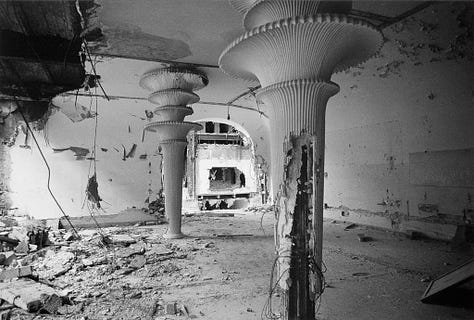
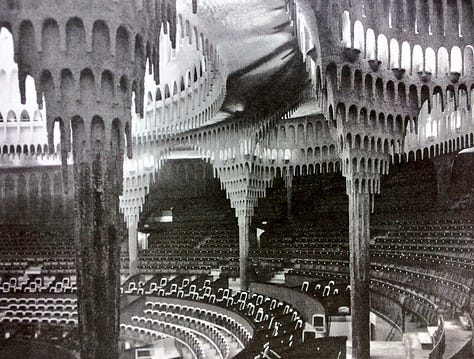
Thank you for reading!
Best,
Macarena






